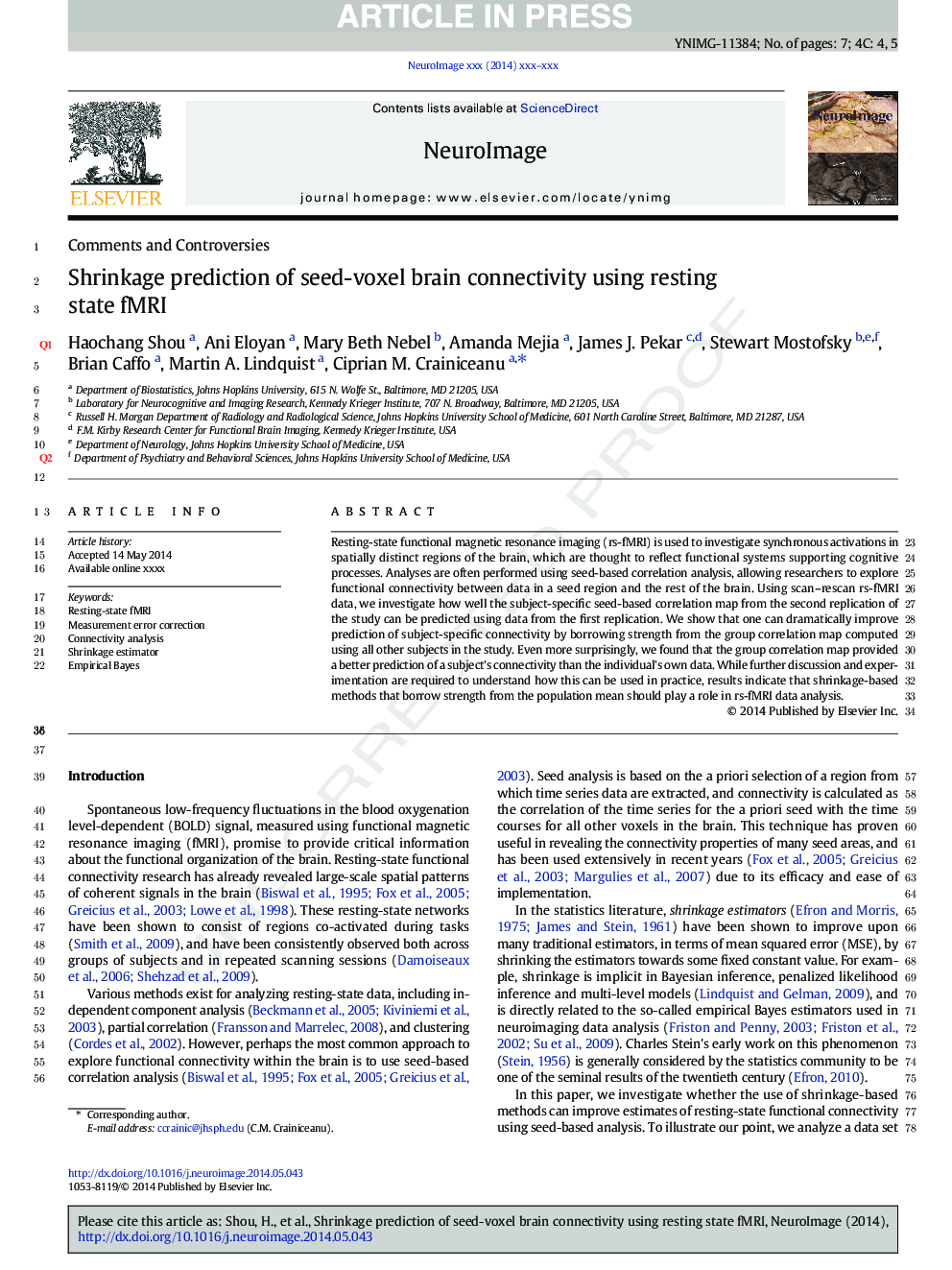| Article ID | Journal | Published Year | Pages | File Type |
|---|---|---|---|---|
| 6026134 | NeuroImage | 2014 | 7 Pages |
Abstract
Resting-state functional magnetic resonance imaging (rs-fMRI) is used to investigate synchronous activations in spatially distinct regions of the brain, which are thought to reflect functional systems supporting cognitive processes. Analyses are often performed using seed-based correlation analysis, allowing researchers to explore functional connectivity between data in a seed region and the rest of the brain. Using scan-rescan rs-fMRI data, we investigate how well the subject-specific seed-based correlation map from the second replication of the study can be predicted using data from the first replication. We show that one can dramatically improve prediction of subject-specific connectivity by borrowing strength from the group correlation map computed using all other subjects in the study. Even more surprisingly, we found that the group correlation map provided a better prediction of a subject's connectivity than the individual's own data. While further discussion and experimentation are required to understand how this can be used in practice, results indicate that shrinkage-based methods that borrow strength from the population mean should play a role in rs-fMRI data analysis.
Related Topics
Life Sciences
Neuroscience
Cognitive Neuroscience
Authors
Haochang Shou, Ani Eloyan, Mary Beth Nebel, Amanda Mejia, James J. Pekar, Stewart Mostofsky, Brian Caffo, Martin A. Lindquist, Ciprian M. Crainiceanu,
